Berlin is a city of contrasts—one the one hand it’s stooped in tragically gloomy history, yet on the other the city is known for its burgeoning arts scene. Nowhere is this more evident than in the many works of art that adorn the walls and buildings all around the city. The best way to experience Berlin’s booming street art scene is to walk the streets with a local as your guide, which is just what I did one rainy day.
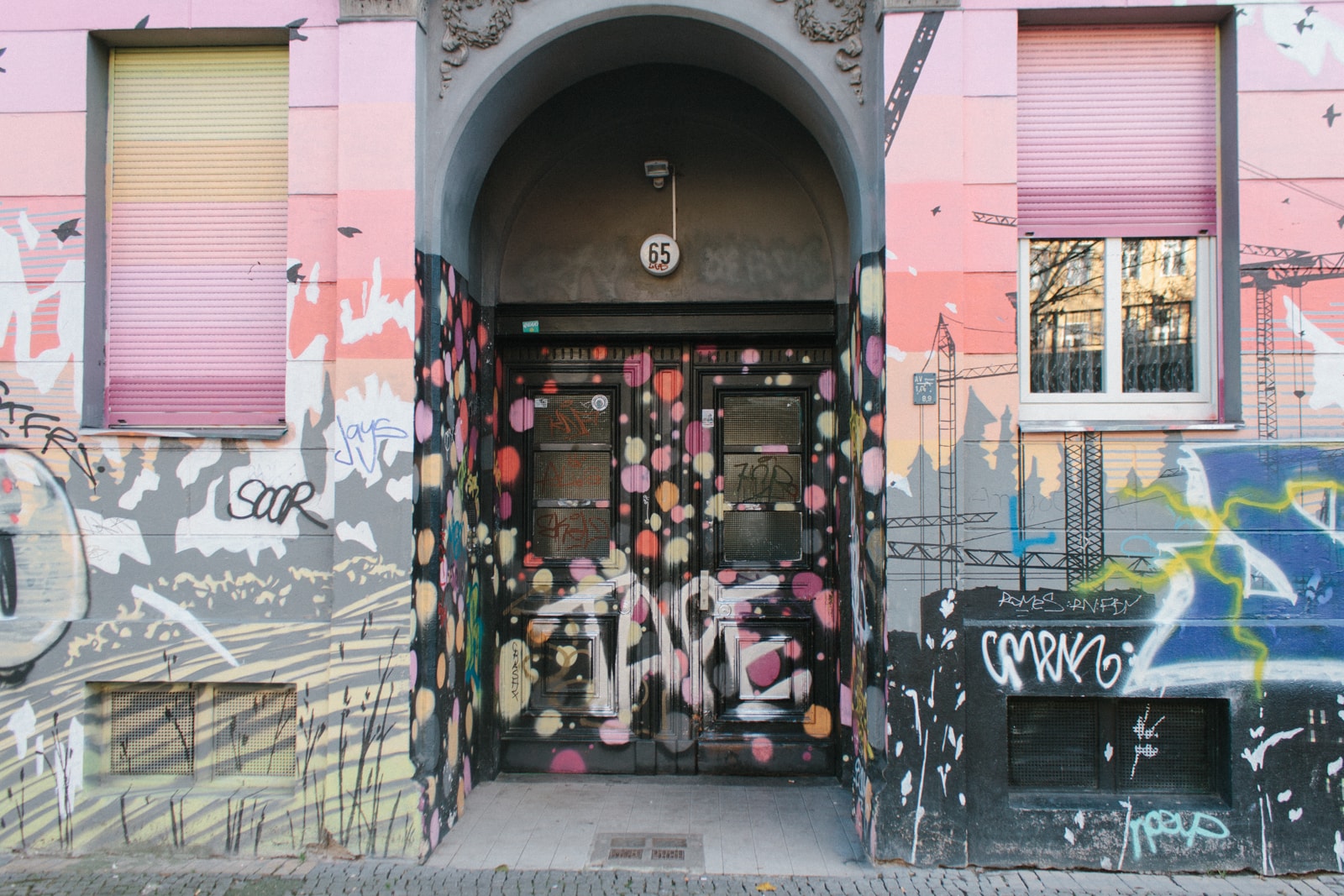
Kreutzberg, Berlin via Culture Trip
The hub
The free walking tour started in the creative hub of Kreutzberg, a neighbourhood just south of Berlin’s city centre. Kreutzberg’s popularity as the city’s centre for alternative culture dates back to the Cold War, when the it found itself in a corner on the western side of the city, surrounded by the Berlin Wall on three sides, causing it to become a less desirable residential area. The subsequent drop in rental prices led to an increase in availability of low-cost housing, and drew a multicultural crowd of artists and alternative types, fueling a creative energy that is still palpable today.
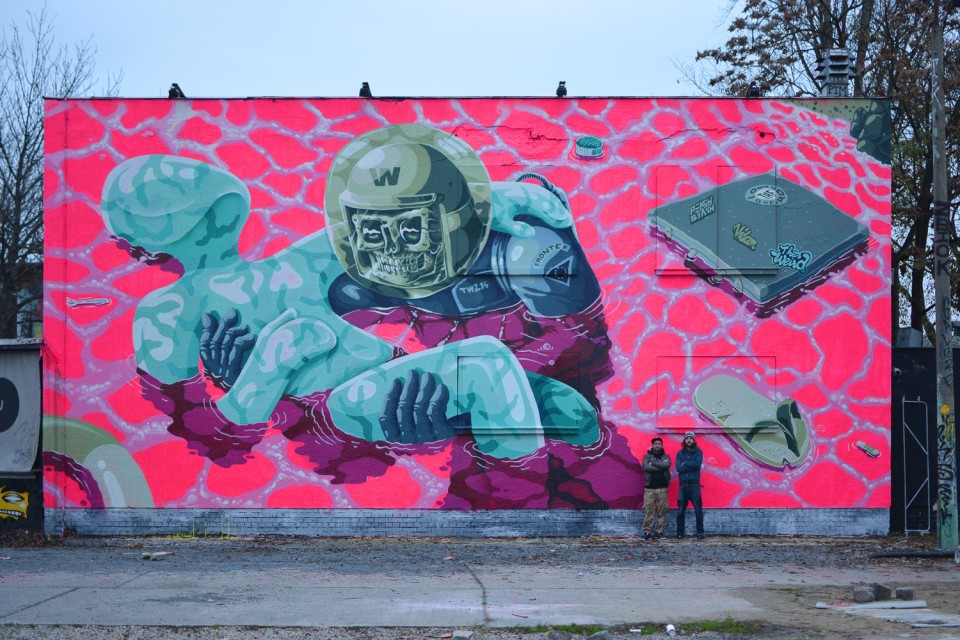
“A day on the beach” Mural by Vidam & Look
The info
Before we got going, our guide, Nichole, gave us a little background of the scene, and explained the difference between street art and graffiti, the types of art and methods used to create them. There are an astonishing 300 street and graffiti artists are working in Berlin at the moment, creating the kind of community that draws world famous artists to the city, and nurtures up-and-coming ones. There is a certain amount of respect among artists, and great works are often left alone, at least for an extended period of time, before another artist makes his or her mark on these concrete canvasses.
Pictured above is the Urban Spree curated mural which changes, though always features the top street artists. You can find this wall at Warschauerstrasse/Revaler Strasse. Take the subway (U1) to Warschauerstrasse, walk on Warschauerstrasse towards Revaler Strasse, and then walk into the abandoned warehouses on the right.
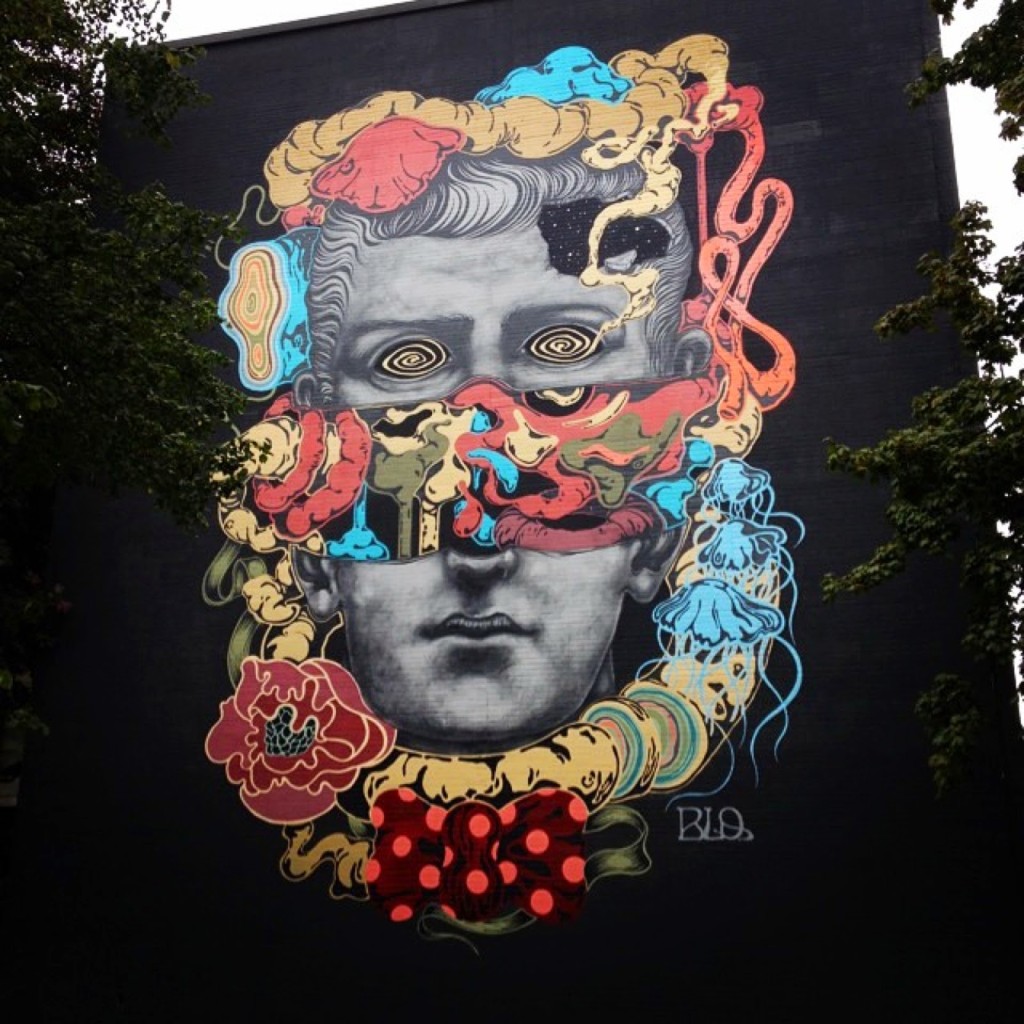
Marble Giant Mural by BLO
The way
The tour wound its way through the streets of Kreutzberg, past YAAM (Young African Art Market), the walls of the famous East Side Gallery, and all the way to the alternative art hub of Urban Spree, taking in graffiti, murals, sculptures and installations of various kinds, with Nichole providing insightful information about the works and the artists who produced them. Her laid-back approach made the tour feel more like a conversation about the alternative culture that fuels the city’s creative spirit, and less like a guidebook recital. The ever-changing nature of street art, and perpetual one-upmanship of graffiti, makes every tour unique, as the landscape can literally change overnight.
The Marble Giant once graced the walls around Stadtbad Wedding. This selection of art was curated with artists represented by the Open Walls Gallery, though it unfortunately was demolished.
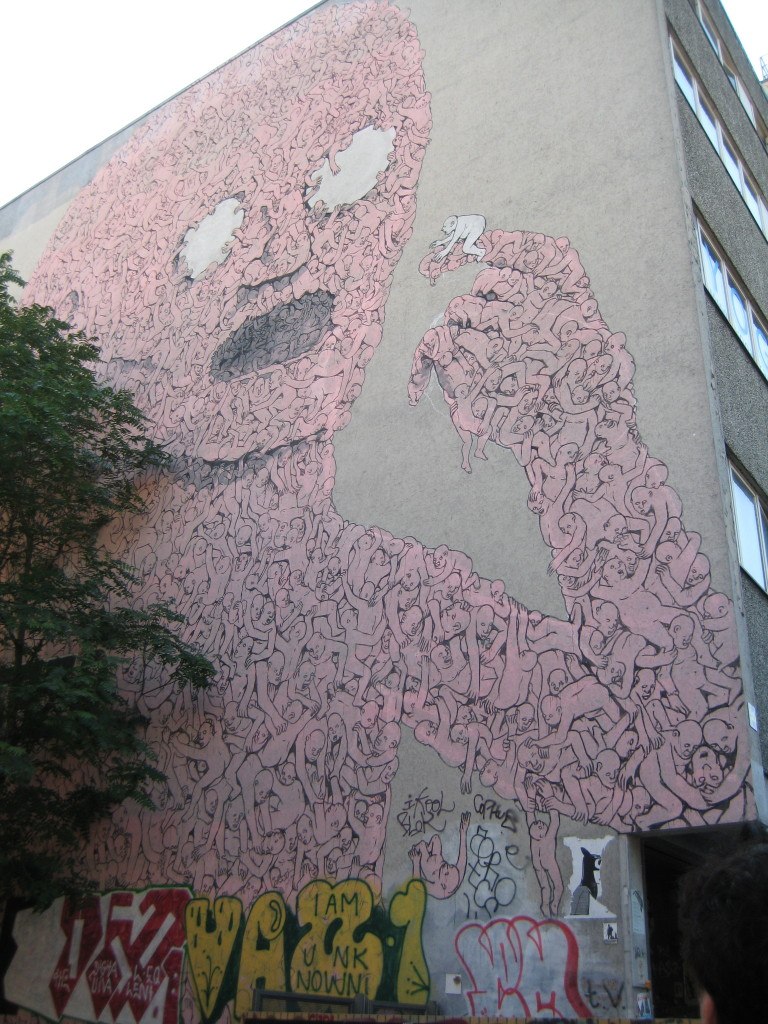
Backjump Mural by Blu
To find Blu’s “Pink Man,” take the subway (U1 or S-Bahn (5 or 7) to Warschauer Strasse and walk towards Oberbaumbrücke. From there, look left.
The players
Many famous graffiti artists have made their mark on the walls, buildings, and structures of Berlin. Some of the most prominent ones include:
Belgium’s Roa: Roa is known for his oversized, monochrome paintings of animals that adorn not only walls and buildings around Berlin, but cities from Rio to London, and even Cape Town. The animals in ROA’s work are all from the area or country in which the works appear.
Italian artist, Blu: Blu is famous for ‘The Pink Man,” a gigantic mural on the Kreutzberg side of the Oberbaum Bridge depicting a massive pink monster made up of small human figures clinging to one another. The artist’s work is also visible throughout the city; and there has been some controversy over his art being destroyed in the city’s ongoing gentrification process.
Berlin’s own El Bocho: a prolific artist whose work can be seen in the streets and galleries of Berlin. He is most famous for ‘Little Lucy’, a sadistic little girl who can be seen putting her poor cat through all manner of torture on walls and buildings all over Berlin.
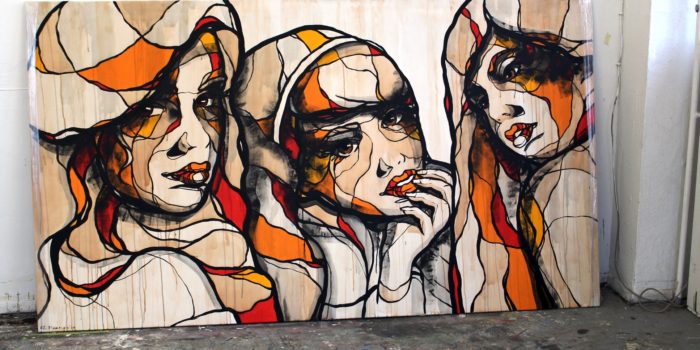
In the studio of El Bocho via streetartbln
Alexandre Forto (aka Vhils) from Portugal: While no longer very active in Berlin, Alexandre Forto’s innovative pieces are still of the most prominent in the city—one of which is an enormous mural of a boy made by utilizing explosives on a building next to YAAM, around the corner from the East Side Gallery. This particular mural has sparked some controversy among the street art community, as it was commissioned by Levi’s as part of a campaign, and some feel the commercial nature of the work takes away from the spirit of street art.
Berlin graffiti crew, 1UP (OneUnitedPower): This is one of the Berlin’s most famous graffiti crews, and their tags are visible all over the city. Arguably one of their most notorious stunts include the bombing of entire subway trains while stopped at a station; sometimes in broad daylight. These days their work can be seen in cities all around the world.
Feature image: Elephant playing with a baloon from Jadore Tong aka S.Y.R.U.S. Find it at Wilhelmstrasse 7, Kreuzberg. At number 7, circle around the apartment complex to the back. The mural is also visible from Friedrichstrasse (south of subway Station Kochstrasse, U6 line).

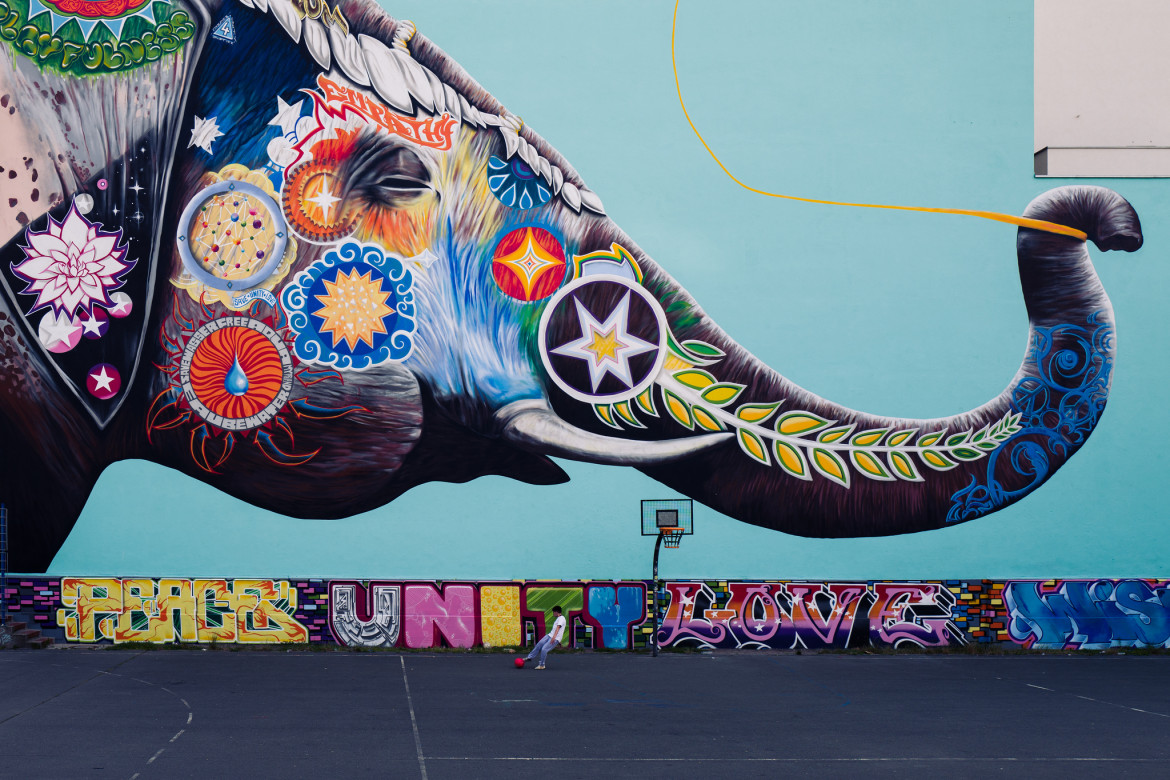





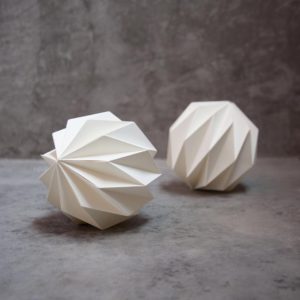
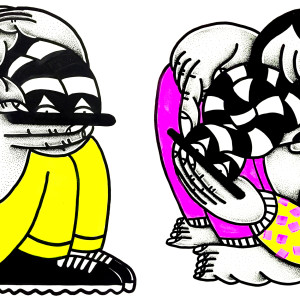
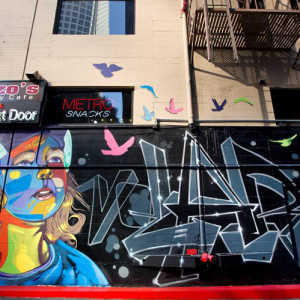
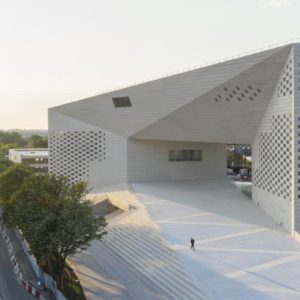
Leave a reply